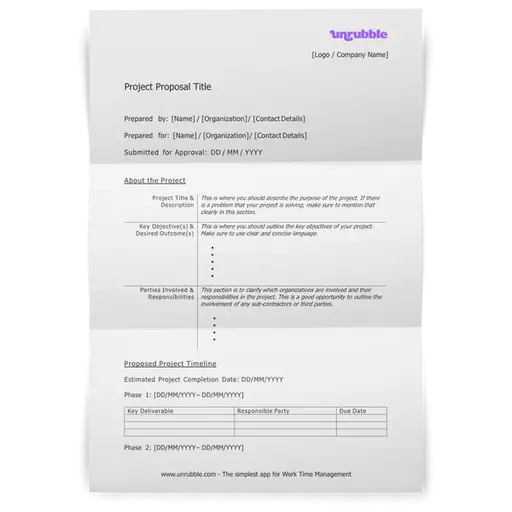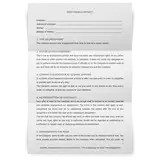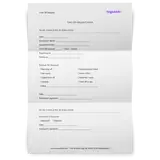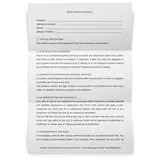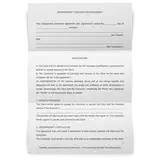So you’ve found the perfect project proposal template – but what comes next?
A successful project proposal is so much more than just a well-designed slide deck or word document. It’s all the content within the proposal that really matters. If you’re looking for a few pointers, here are 5 key tips and tricks to try on your next project proposal template.
Here’s a sample Project Proposal template that can be easily customized and adapted to meet your requirements. It’s free to download and use.
Five Key Tips for Every Project Proposal Template
1. Background Research is a Must
One of the first steps in learning how to write a project proposal is to recognize the importance of research. When creating your project proposal, make sure that take plenty of time to understand:
- The nature of your client’s business
- The specific problem(s) that your client is facing
- How your organization is positioned to best handle this problem
- How your organization has successfully handled similar problems
- Who in your organization is the best fit for this project
Once you have all of this information collated, adapting your project proposal template will be easy.
2. Remember Your Audience
You can get a lot of ideas from sample project proposals, however, the most important thing to draw your inspiration from is your audience. Each project proposal that you create should be tailored for each potential client.
For example, if the potential client is a more formal and traditional organization, you will want to consider making your project proposal as formal as possible. If the potential client has a more modern and relaxed culture, you may want to try to stand out with a more casual and friendly tone.
By keeping your audience’s needs and communication style in mind, your proposal will be more likely to resonate with their key decision-makers.
3. Be Realistic with Your Timeline
Every project proposal example includes a spot for a timeline, but in reality, it can be very difficult to figure out how long a project will take in the real world.
And as a rule of thumb, try to pad in an extra week or two when creating your timeline. This will ensure that your team can confidently make deadlines without feeling rushed or behind schedule. And as a bonus, your client’s expectations will always be exceeded!
If your team has already been a part of a similar project, take a moment to look back at how many hours it took them to complete that project. This will help you to make an accurate forecast for your timeline on this project.
4. Emphasize the Problem – And How You’ll Solve It
Remember, the purpose of a project proposal is to demonstrate how well your team or department can solve a problem – and it’s important to keep that at the core of your proposal. Try not to get distracted or veer off-topic, and make sure that you fully understand the problem from the client’s perspective.
It’s also great to share information about your department’s expertise and experience in your industry, however, your reader (and potential client) likely cares more about your specific experience with handling similar projects.
5. Get Feedback from Others
Once you have completed filling out your project proposal template, you should then consider seeking feedback and input from members of your team. Your co-workers may be able to spot additional mistakes or typos, and they can also let you know if the proposal flows well and makes sense. Colleagues who have been with the organization for a long time may also have crucial insight into planning for similar projects, and they may have even worked with this client previously.
Try to plan for this feedback process ahead of time, as it may take a day or two to make the additional amendments that your colleagues request.
